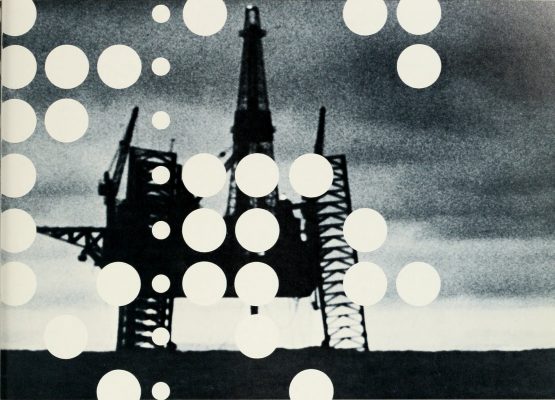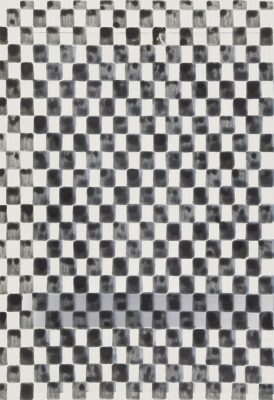I was fourteen when I first transformed from Rosa into ~<*RoSaBubbLe*>~. Propelled by my adoration of Courtney Love – the lead singer of Hole, who I loved for many reasons but especially because she wrote on her stomach in eyeliner – I travelled down my first internet rabbit hole to the forums of the North American feminist magazine, Bust. After school, in the living room I shared with my family, I would dwell in this private portal to a different world which could easily be shut on demand (just click the x).
Here, I found other young women, who were negotiating their similar-but-different lives. Because of global capitalism we had a lot in common: they too went to Sizzler all-you-can-eat buffet for a treat with their grandparents, they too loved Courtney. I didn’t speak (type) much because they all seemed more articulate than I was and because they were from North America and one was even from London, which seemed like centres of the world to me, back then in the suburbs of Sydney. I learnt many things on these forums, but two have stuck with me most vividly. The first thing I learnt about was zines, a decidedly low-tech cut-n-stick subculture which I readily embraced. The second was something called ‘menstruation porn’, which is exactly what it sounds like. I visited the slow-to-load webpage of very happy-looking bleeding people naked in the forest only once. I think that, while intrigued, I was also repulsed (fully inhabiting the Freudian meaning of ambivalence), or maybe the dial-up cut out or my mum came home from the supermarket. But knowing that it was there and being able to turn it over in my mind was enough. Desire it seemed, was much more expansive than I had thought. How curious. In a world where I had already learnt to be frightened of men, the website taught me that they didn’t necessarily always get to determine how sex — and everything else — might go. It was a small, quivering thought against the rest of what I was being told and the ways that my body, at that time, was being mishandled.
Right now, much is being written about the internet; its early form is being publicly historicised.[1] It is referenced in current fashion called 1990s/Y2K, a reference to the Y2K computer bug which was possibly going to end the world, or at least cause mass chaos as the new millennium dawned. This glitch never happened, and given the complexity of what we are now facing planetarily – catastrophic climate change and this related pandemic – that fear seems quaint. Perhaps because the internet we now inhabit is so different to its earlier incarnation, it’s as though we have all woken up, rubbed our eyes and thought ‘Where am I? And what is this place?’ Legacy Russell’s Glitch Feminism (2020) opens onto the world of Web 1.0, with an anecdote not dissimilar to my own: she, a female-identifying, ‘fledgling queer Black body’ subject to ‘intensive and incessant white heteronormative observation’, found a space to be and to play online, away from the surveillance of the world she calls Away-from-Keyboard or AFK, which in her case was school and her quickly gentrifying New York neighbourhood. Russell logged on as LuvPunk12 and ‘claimed her range’. Here she found she ‘could be whoever she wanted’; in terms of age, she could be ‘sixteen, twenty, seventy’. She birthed new selves and killed off others. She could experiment with gender, and ‘set out to explore man, to expand “woman”.’ She ‘slipp[ed] in and out of digital skins’ and celebrated these in the new rites of cybersex.
Certainly, the early internet was spacious and playful. If you don’t believe me, ask those around you what their first email addresses were: I did, and found that my sister was theforthsister@charmedmail.com, writing herself into Charmed, the TV drama about three sisters who also happened to be the most powerful witches of all time. A good friend of mine was ian_the_farmer: he is neither an Ian nor a farmer, but ‘just thought it was funny’. There were many variations on ‘coolgirl’ (kewl, grrl, etc), some invented by people who were once girls but didn’t necessarily grow up to be women. What I loved about these answers was how far away from work, how unprofessional and exuberant my friends’ early email addresses were. Now, we all sign off ‘Best regards’, and many of us check our work emails all the time, but not so long ago we wrote eMaILs LiKe tHiS** ;). During these conversations, my friends began spontaneously humming the sound of the dial-up modem, in the way a football chant or a school song might be sung a little drunkenly at your ten-year school reunion. The clanging anthem of our youth! How different this early internet was: spacious, freeing and quite funny compared to Web 2.0, which feels tight and difficult to move through. The only laugh I get now is when the clairvoyant algorithm gets something wrong, for once. I already read that book, dummy! I chuckle into the machine.
But Russell’s Glitch Feminism encourages us to move beyond thinking about the early internet in nostalgic terms, and cautions against dismissing the contemporary internet as a ‘feverish, electric unlivable hell’, as Jia Tolentino puts it. [2] Rather, Russell suggests that despite excessive consumption and surveillance, there is still liberation to be found on the internet. It remains, in her words, ‘a room of one’s own’, a place to be free, to make work and to invite others in. This, as Russell compellingly argues, is because the internet remains less binary in terms of gender than the world AFK. While, as Russell says, ‘a body read online as male/female… fulfils a target demographic for advertising and marketing,’ this is less fixed than in the world offline. Russell shows us how this is so through the artists she profiles, many of whom are queer, Black and trans. Online, there remains a space to practise what Russell calls ‘glitch feminism’: to trip the wires of the ferociously enforced binary of gender, which, this book reveals, must always be filtered through race and sexuality in order to make sense. Online, we still get to choose what kind of body we have, and can learn to use the technological tools to remix, ‘rearrange… add to the original recording’, as well as employ technological failures to ‘glitch’ the system. We can inhabit the spaces of the in-between, and be ‘a little of this, a little of that, a little of something else’. Here, I’m reminded of the way artist Travis Alabanza explains trans identity: that it’s not about moving from one side of the rigid gender binary to another, from precisely ‘male’ to precisely ‘female’, but about ‘escape…choice… autonomy. Wanting more possibilities than the one you forced on me.’ [3] Trans as in transcend. Russell suggests that online, we don’t have to have a body at all, but can step out of skin and float the physical form across the cool blue sea and through the coral reefs of cyberspace. This is what she means when she flips Simone de Beauvoir’s ‘One is not born, but becomes a woman’ to ‘one is not born, but becomes, a body.’ Certainly, in making the restrictions of the corporeal body known, the internet might allow us to act beyond its limits.
Most powerfully, Glitch Feminism suggests that by refusing to inhabit the binary online, the force of the binary in our lives ‘AFK’ is revealed. Glitch feminism as a practice can expose the gender binary for the strange, violent trick that it is, and unpick its role in keeping our world turning ‘under the sun of capitalism’, as Russell puts it in characteristically beautiful prose. It is the gender binary that enables us to be marketed to, but more than that, it is what allows us to be read as human. Those who are deemed not to measure up to this binary are subject to violence from the state and other people, as we see in the huge rates of violence to which trans people are subjected. But as my best friend Joe, who is trans and non-binary and a deep and caring thinker taught me, this violence demands gender rigidity, that people stay within the binary, and so it is a good way to comprehend the high rates of violence against cis-women too. [4] So often violence against women and against trans and non-binary people is, in the eyes of perpetrators, seen as a punishment for ‘daring’ to step beyond the confines of these tiny boxes. On the street, in the public toilet, and in the home, people are daring to live beyond the tight confines of the bodies they were assigned at birth, and so are subjected to violence for which they are then blamed. [5] Of course, in all these circumstances, no one need to have done a single fucking thing to cop it, except have the audacity to live.
Glitch Feminism suggests that in the remaining nooks and crannies of the internet where one is free to ‘glitch’, where people have ‘a right to complexity’ and to an identity beyond the binary, can assist in life AFK. My own experience in the chatrooms of Bust magazine offered me ideas like armour that I could wear, where necessary, around the place. And indeed for CL, a zine maker and artist whom Russell profiles, it was the internet that allowed her to embrace her identity as an ‘intelligent Black girl’ and then to continue her art practice AFK, to extend her agency and range. For other artists, such as self-defined ‘cyborg’ Juliana Huxtable, the internet offered control and freedom against suicide, gifting her tools to inform her offline art practice. But beyond inspiring the glitch feminist practice of individual artists, I wonder about the possibilities of a collective glitch. ‘How can we come together in solidarity?’ asks Russell. ‘It is our responsibility collectively to infect… to make impossible pathways viable as all else circuits toward a triggered collapse.’ Perhaps if we all glitched together and collectively refused the gender binary, the whole thing would come down.
But solidarity seems difficult for the internet, a claim that might exasperate those who discuss its possible powers. Surely, they might say, this is just a reflection of the difficulties of acting collectively, in solidarity, in life, AFK. Indeed, in its rare moments of collective solidarity, the internet bristles with energy and carries this force to those inhabiting its networked world. The internet allows people to speak to each other within the midst of social movements, to trade tips, collapsing the vast geographic distances between them. We have witnessed this year with the Black Lives Matter movement. And we saw it in 2014, when protestors such as the award-winning photojournalist Hamde Abu Rahme from Bil’lin, Palestine held a sign in solidarity with African-Americans protesting the murder of eighteen-year-old Mike Brown by the police and ongoing racist police violence in Ferguson. It read: ‘The Palestinian people know what it means to be shot while unarmed because of your ethnicity #Ferguson #Justice.’ Palestinians, subject to terror by Israeli forces, the rubber-coated steel bullets, teargas and live fire necessary to ongoing occupation, offered North American comrades, who they had never met and perhaps never will meet, tips on how to deal with being tear gassed. When Mariam Barghouti tweeted ‘Make sure to run against the wind… when you’re teargassed, the pain will pass,’ and advised protestors not to flush their eyes with water but to try ‘milk or coke’ instead, the internet amplified what was common to these struggles. Their shared repertoire of resistance then breathed real-life networks into being when Hands Up United and the Dream Defenders, vocal organisers against US police violence, subsequently visited Palestine on a solidarity tour. [6] But I want to suggest that these glimmering moments of resistance push against the grain of the internet, just as these movements AFK push at the grain of social power. The internet trades so fully in the individual, is so self-obsessed that solidarity can be hard to build.
The story of how the internet developed, its ancient history, can tell us something of why this is so. There is the history that is well-known: that projects funded by the US Defence Department developed the technology that laid the ground work for the internet as we know it. But there is also the lesser known story – that the internet finds its origins in hippy-culture and the back-to-the-land movement of the 1960s and 1970s, which while thought to be collectivist movements, can go some way to illuminating the individualism and self-obsession on which the contemporary internet trades. In the US, the back to the land movement involved over 100,000 people – mostly young and almost all white – who were disgruntled with what they saw as the repulsive excesses of modern life, such as rampant consumerism in the face of the first televised war in Vietnam and alienation from food production (I imagine them saying things like ‘I haven’t ever seen a tomato plant, man. I mean I don’t even know how they grow,’ as they splodged ketchup onto a hotdog). So they established communes and communities which sought self-sufficiency, and which have usually been considered ecological, collectivist and even anti-capitalist in their philosophy. The go-to-guidebook for those wanting to establish land based communities was titled the Whole Earth Catalog, written by Stewart Brand, a maverick of the counter culture. It was first published in 1968. Across its 448 pages were the kind of low-tech items you might expect if you wished to form a community, such as tools for land production, home weaving kits or a recipe for ‘beautiful natural green cereal’ which readers were encouraged to eat every day in order that ‘strength will come to you’. But perhaps more surprisingly, this catalogue also recommended books of cybernetic theory, which Brand saw as a way to understand the imbricated nature of all beings. (This is the technological edge of the hippy cliché ‘we are all connected’.) The catalogue got its name from a moment of technological wonder, the photographing of the Earth from space during the Apollo 8 mission in 1968, which allowed it to be seen in its spherical entirety, and the Portola Institute, one of the first foundations dedicated to computer education, helped out with the printing. While Whole Earth Catalog was based on ultra-suburban mail order catalogues like L. L. Bean, there were a couple of important differences: you couldn’t order directly from them, but the catalogue pointed readers to where they might get things. In this way the catalogue connected readers to other stars in the constellations of the counter culture and the circuit remained open, not closed. The way the catalogue is arranged is a pastiche, where architectural drawings of space structures feature alongside poems about Tantra Art, and readers’ reviews of the tools on offer. This is why Steve Jobs, the founder of Apple, described the catalogue as a proto-Google in paperback form. [7] Jobs, too, was influenced by the tools the counter-culture offered for personal fulfilment, such as meditation and what is now called ‘clean eating’, which he embraced obsessively. Indeed, Brand described Jobs as ‘right at the nexus of the counter-culture and technology’, and Apple is named after he visited an apple farm while on a fruitarian diet. [8]
The first words of the catalogue make it clear that back-to-the-land had a distinctly more individualist philosophy than other collectivist movements, such as women’s liberation and Black Power. ‘We are as gods and might as well get good at it,’ the catalogue begins. In response to the dilemma of ‘government, big business, formal education, [and] church’ it insisted that ‘a realm of intimate, personal power is developing – power of the individual to conduct his own education, find his inspiration, shape his environment, and share his adventure.’ [9] For Brand, and others, communes were just a tool to self-actualise rather than a project of collectivism and social change. As historian Fred Turner discusses, when the communes fell apart in the late 1970s, Brand and others pivoted from these crumbling experiments which they sought to infuse with technology, towards the new computing boom. [10] Brand took the Catalog online, connecting people in one of the first online networks: the Whole Earth ‘Lectronic Link (known as the WELL). Brand encouraged the renegade hippy spirit of self-actualisation to be reborn in the figure of the hacker, organising some of the first conferences where hackers could meet. But despite the hacker’s potential power to subvert – to glitch as Russell might say – the hacker was also celebrated as a powerful individual. As such, the hacker could be enlisted in the personal computing boom, and the neoliberal vision that came with it – demands for a small government and personal freedom, which came to unite Brand with figures like the conservative politician Newt Gingrich. So perhaps the reason the internet seems so obsessed with the self and recalcitrant to collectivity is because the individual is in its very foundations. Even in the early days of Web 1.0, when things were clunkier, sillier, less monetised, where you might ‘browse’ the internet the way you might have browsed the Whole Earth Catalog – spaciously, nonchalantly, thoughtfully and with ease – I still logged on in search of myself.
Now, the pace is infinitely quicker. The internet propels the individual to comment, to retweet, to proffer opinions and hot takes, to develop a ‘personal brand’ in its own extremely unsatisfying version of self-actualisation. It also feasts on the manifold aspects of the self, creating an algorithm of personalised ads and YouTube suggestions that hold us online, clicking around, opening more and more tabs. This is what Jenny Odell means when she speaks of ‘the attention economy’, stressing that revenue is generated from how long we spend online and how much we engage through likes, retweets, comments. [11] I often feel dazed and overwhelmed by the demand that I engage. It feels like work, or it feels like addiction. I open my laptop to Google, say, ‘repot tomato plant how to’ and end up on Twitter, reading a tweet about the government’s negligence around Covid and admiring a piece of bark that looks uncannily like a dog. Like going to big Tesco, where I must whisper my list to myself, I forget what I came to find on the internet, and my tomato plant remains root-bound. This makes it difficult for us to take courage from the artists that Russell profiles and to collectively glitch the binary online, or away from the keyboard, because the endless chatter of the internet threatens to dissolve their power. The pace of the internet does not give us space to metabolise what we have just seen, even if it is profound. I had forgotten about the beautiful moment of solidarity between Ferguson and Palestine, and perhaps you had too. It only happened six years ago. But on the internet things seem to just disappear. It is hard to hold on, hard to remember.
I finished Legacy Russell’s book during lockdown, where I am forced to be always online in order to keep up with work during a pandemic and because it is, at the moment, the only public sphere we have. I’m not sure how much I can choose to ‘become a body’ or not, when my physical body is making itself so fully known. The cycle of bad news, the demands of writing and Zoom meetings manifest as pain in the places where my nerves bundle (elbow, shoulder, neck). Life lived solely on the internet hurts. I am one of the lucky ones, not sick and not (knowingly) infected, not yet faced with death of loved ones. But even so, Covid makes me confront my physical self, as well as the government’s refusal to acknowledge all our bodies as vulnerable and treat them with the respect they need to survive and to thrive. In order to keep myself and others safe, I have to deny what my body most desires. But still, I dream of sweating in a club and singing at a demonstration. I want to hug my friends, to feel different chests pressed against my own, to squeeze the hand of a relative as she tells a moving story, to stroke the hair of a newborn, to hold this baby’s feet in my hands and marvel at those little toes. I want to do all of this away, far far away from the keyboard.
I want a life beyond the screen, because this is where touch happens, and I think, where change happens too. Perhaps for me it has always been this way. My first email address was, after all, i_wanna_hold_ur_hand. It was impossibly long and, for the moment, it is impossible, but it remains my greatest desire.
[1] See, for example, Jia Tolentino ‘The I in the Internet’ in her Trick Mirror: Reflections on Self Delusion (Fourth Estate, 2019) Jenny Odell, How to do Nothing: Resisting the Attention Economy,(Melville House: 2020), Jinghua Qian, ‘Sexting at the End of the World’ 14 September, 2020, Kill Your Darlings and the two podcasts: The Internet, The New York Times: Rabbit Hole.
[2] In Trick Mirror: Reflections on Self Delusion, p. 44.
[3] Travis Alabanza quoted in Lola Olufemi, Feminism, Interrupted: Disrupting Power (Pluto Press, 2020) p. 49.
[4] For work on the violence cis women face see, for example: Jess Hill, See What You Made Me Do: Power, Control and Domestic Abuse (Black Inc, 2019), UN Women, Facts and Figures: Ending Violence Against Women.
[5] For work on the violence trans people face see, for example, Hilary Aked, ‘Neulisa Luciano Ruiz’s death reminds us of the risks trans people face just for using the bathroom’ The Independent, 29 February, 2020, Stonewall, LGBT in Britain: Trans Report.
[6] For interesting work on this see: Annie Olaloku-Teriba, Political Blackness and Palestinian Solidarity, Red Pepper, September 22, 2020. https://www.redpepper.org.uk/political-blackness-and-palestinian-solidarity/
[7] Anna Weiner, ‘The Complicated Legacy of Stewart Brand’s ‘Whole Earth Catalogue’ New Yorker, November 16, 2018.
[8] Walter Isaacson, Steve Jobs (Simon and Schuster, 2011) pp. 313, 331
[9] The entire Whole Earth Catalogue (1968 edition) can be downloaded here: https://monoskop.org/images/0/09/Brand_Stewart_Whole_Earth_Catalog_Fall_1968.pdf
[10] Fred Turner, From Counterculture to Cyberculture: Stewart Brand, the Whole Earth Network and the Rise of Digital Utopianism (University of Chicago Press, 2006).
[11] In her How to Do Nothing: Resisting the Attention Economy (Melville House, 2020).
share
ABOUT THE CONTRIBUTOR
R. V. Campbell
is completing her PhD in history at the University of Cambridge. Her work has recently appeared in Public Books, Feminist Review, Meanjin, Novara and the Independent. She has just finished a children’s book about International Women’s Day.




